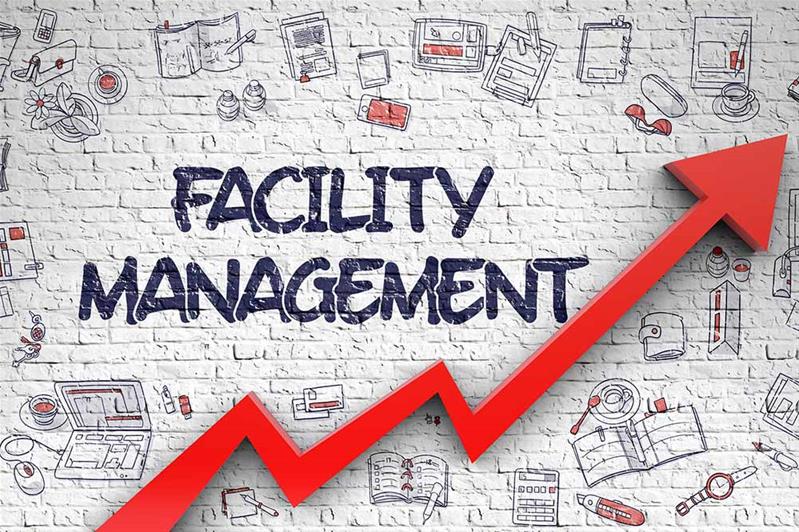Leading Advantages of Total Facility Management for Streamlined Procedures
Total Facility Management (TFM) stands for a critical method to enhancing operational performance by integrating numerous services, such as upkeep and security, under a unified management structure. The inquiry remains: what specific benefits can companies harness from adopting TFM, and how might these advantages transform their operational landscape?
Boosted Functional Effectiveness
Improved operational performance is a main benefit of carrying out total facility management (TFM) approaches. TFM encompasses a thorough technique to handling a center's resources, procedures, and facilities, inevitably improving operations. By combining different services-- such as upkeep, cleaning, protection, and area management-- TFM boosts and lessens redundancies sychronisation amongst various operational features.
The integration of modern technology additional enhances this performance. Advanced facility management systems provide real-time data analytics, making it possible for facility managers to make educated choices that enhance workflow and source allowance. Anticipating maintenance strategies, as an example, expect devices failings before they happen, minimizing downtime and expanding asset life expectancy.
Additionally, TFM promotes standardized processes throughout numerous divisions, guaranteeing consistency and top quality in solution delivery. This harmony lowers operational disruptions and cultivates a more joint workplace. Because of this, employees can concentrate on their core duties, driving performance and improving total efficiency.

Expense Reduction and Cost Savings
Implementing total facility management (TFM) not just improves functional performance but additionally considerably adds to set you back reduction and financial savings. By consolidating various services under a single management framework, companies can get rid of redundancies and streamline procedures, therefore minimizing operational expenses. TFM enables much better procurement techniques, allowing business to bargain bulk investing in contracts with suppliers and company, bring about lower prices.
Additionally, TFM highlights preventative upkeep, which reduces unforeseen malfunctions and extends the life-span of essential tools. This positive technique not just lowers repair work costs yet additionally boosts the dependability of facilitiess, making sure undisturbed procedures. Additionally, energy efficiency initiatives, often a crucial emphasis of TFM, cause significant cost savings on energy bills, as facilitiess are optimized for decreased energy usage.
Improved Resource Management
Reliable source management is a keystone of total facility management (TFM), making it possible for organizations to enhance making use of their assets and workforce. By applying TFM methods, companies can adequately assess their source allocation, guaranteeing that every property is used efficiently and efficiently. This alternative method permits the identification of underperforming resources and the capacity for reallocation or enhancement.
Additionally, TFM promotes the combination of innovation for real-time tracking of resources, which assists in anticipating upkeep requirements and preventing pricey downtime. By leveraging data analytics, companies can make enlightened decisions concerning resource release, ultimately boosting productivity and lowering waste.
Additionally, TFM promotes a society of continual improvement, motivating teams to consistently assess and fine-tune their source management techniques. Total Facility Management. This proactive stance not just reduces functional disruptions but likewise cultivates development, as workers are encouraged to suggest enhancements based upon their firsthand experiences with resource usage
Streamlined Interaction Channels
In total facility management, structured communication channels play a critical function in cultivating collaboration and effectiveness throughout groups. Reliable communication guarantees that all stakeholders, consisting of facility managers, upkeep staff, and provider, are aligned with business objectives and operational demands. By establishing clear lines of communication, groups can quickly attend to issues, share updates, and apply options, consequently minimizing downtime and enhancing efficiency.
With centralized communication systems, details is quickly accessible, enabling real-time updates on maintenance demands, source allotment, and job timelines. This transparency not just decreases misunderstandings however also encourages employees to make informed choices promptly. Furthermore, structured interaction assists in better control during emergencies, guaranteeing that all workers are informed and can react immediately.

Enhanced Emphasis on Core Activities
A key benefit of total facility management is the boosted concentrate on core tasks, allowing companies to focus on their primary organization goals - Total Facility Management. By contracting out non-core features such as upkeep, cleansing, and click this site safety and security, firms can redirect their resources and energy in the direction of strategic efforts that directly add to their affordable benefit and development
Total facility management incorporates various operational jobs under a solitary umbrella, fostering effectiveness and reducing redundancy. This loan consolidation not just improves processes but also boosts accountability, making sure that every facet of the facility runs sympathetically without diverting focus from what absolutely matters-- core business features.
Additionally, this approach makes it possible for workers to devote their effort and time to jobs that drive development and boost client fulfillment, as opposed to getting stalled by operational difficulties. With a reputable facility management partner managing day-to-day procedures, companies can attain better dexterity, respond promptly to market changes, and maintain a sharper focus on their goal.
Ultimately, enhanced concentrate on core activities causes improved general efficiency, enabling organizations to enhance their market position and accomplish their critical objectives much more properly. - Total Facility Management
Verdict
In conclusion, Total Facility Management considerably boosts operational efficiency by combining necessary solutions and leveraging information analytics for notified decision-making. Price decreases and boosted source management add to general cost savings, while streamlined communication channels foster collaboration amongst stakeholders.
Total Facility Management (TFM) stands for a tactical technique to improving operational performance by incorporating various solutions, such as maintenance and safety, under a unified management structure.Boosted functional efficiency is a main advantage of executing total facility management (TFM) approaches. Advanced facility management systems give real-time information analytics, allowing facility supervisors to make informed choices that improve operations and resource allotment.Implementing total facility management (TFM) not only enhances operational performance but also dramatically adds to set you back decrease and cost savings.Reliable resource like this management is a cornerstone of total facility management (TFM), making it possible for companies to maximize the usage of their possessions and workforce.